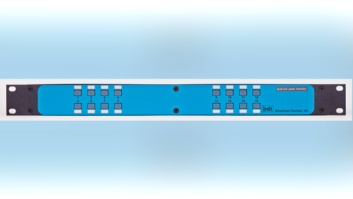The following story is an excerpt of the Radio World eBook “AoIP for Radio 2018.” Read it for free at www.radioworld.com/resource-center.
The ability to generate unique content for your radio station has probably never been as important.

A simple way to do it is by taking live shots from a news or sporting event or by hosting guests who reach the station by calling in in some fashion. Fortunately, stations no longer have to rely on POTS or 3G cellular phones as a way to connect to remote callers, because there is a (relatively) new use for IP codecs that I refer to as contribution audio.
Let’s consider three offerings available today.
Broadcast Bionics developed Skype TX for Radio in partnership with Microsoft, as a way for stations to receive high-quality audio “from anyone, anywhere,” whether it’s a remote host, guest, reporter, commentator or listener. It’s aimed at the workflows of radio broadcasters wishing to use Skype calls on air by connecting to Skype users by way of their mobile phones, web browser or desktop.
Skype TX for Radio gives you the scale and flexibility to deliver multi-line talk-show and contest formats via Skype with a PC. The company’s PhoneBOX4 integrates Skype calls alongside traditional phone lines, SMS and social media.
Skype TX for Radio is a Windows service that can run on your existing machine or hosted as a virtual machine. Up to 14 lines of Skype connectivity can be accommodated from one server.
Well known in the area of contribution audio is Comrex, whose lineup includes AoIP codecs and other telephone-related products. Opal is a new Comrex device that enables remote guests to connect to the studio by clicking on a link delivered in an email message originating from the station.

Opal works by activating the Opus encoder built into popular browsers including Chrome, Firefox and Opera. (Support for Safari, on iPhones with iOS11, along with newer versions of the Mac OS, was added in early February.) As a result, the remote user can connect to Opal from any computer or mobile device with one of those browsers installed. Opus transmits high-fidelity, low-delay audio in both directions; all the remote guest needs to transmit audio is a browser and a microphone.
At the station, the half-rack-width Opal device makes the actual send and receive connections to the studio facility via balanced XLR connectors (analog or AES). Aside from its Ethernet connector, it has a nine-pin DIN for remote contact closures.
In order to use Opal you will need a static, public-facing IP address and a domain name associated with that IP. “In order to keep the web browsers from complaining, we need to provide SSL/TLS security. In order to have Opal provide this security, it needs a URL with a real Domain Name instead of an IP address,” the company states.

Another solution is QGoLive, a software-to-software offering that does not require purchase of hardware at the studio (receive) end. The transmit app runs on iOS or Android devices; the receiver application runs on PC or Mac. An Android-based hardware receiver, with balanced XLR inputs and outputs, can be used on the receive end so that there is no need to tie up a computer.
The primary purpose of QGoLive is to replace the live shots that are typically broadcast in phone quality when a reporter has just arrived on the scene and has not had an opportunity to set up equipment for of a broadcast-quality live shot.
QGoLive has three major functional aspects: Live, Playlist and Scripts. The “live” mode allows the user to connect to the receiver at the radio station after logging in. To connect, the user hits the “play” button in the center of the screen, which will send audio to the station receiver and send cue audio to the app. The app will run in the background so you can use other non-audio apps while broadcasting with QGoLive.
The “Playlist” function allows the user to play out cuts recorded and edited in external apps (such as Twisted Wave) or any audio program that can open its output (mp3) in another program (or a browser that can open downloaded files in another app).
QGoLive allows you to write or dictate scripts which the talent can read while live. The user can also insert edited audio directly into the script for playback during a live report. And imported cuts can be added to and played from the scripts tab.
What contribution systems have you used? What other offerings should readers know about? Email us at [email protected].







